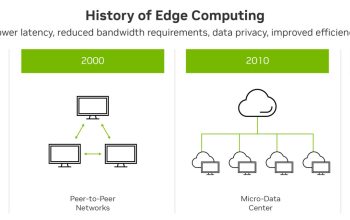Campaign analytics is the process of measuring and analyzing the effectiveness of a marketing campaign. It includes tracking key performance metrics such as new contacts, closed deals, and influenced revenue, as well as evaluating the success of the campaign compared to its objectives. SEO campaign analytics is crucial for identifying what worked well in a campaign, understanding how the target audience responded, and improving future campaigns through data-driven decision making.
Understanding Campaign Analytics
Digital marketing campaigns have become an essential aspect of any business in the modern era. They are used to promote products and services, raise brand awareness, drive traffic to websites, and increase leads, among other objectives. The success of a digital marketing campaign is measured by how users engage with the content, how they interact with the brand, and ultimately, whether they convert into loyal customers.
One of the most important tools for measuring campaign effectiveness is campaign analytics. By analyzing data from different channels and sources, businesses can gain crucial insights into user behavior and preferences. If utilized correctly, these insights can help create more effective campaigns that resonate better with customers.
Think of campaign analytics as your x-ray vision into the psyche of your target audience. Just like a doctor uses x-rays to understand what’s going on inside a patient’s body without having to cut it open, campaign analytics enables businesses to see what’s happening inside their target audience’s mind without having to ask each individual person.
Basically, SEO campaign analytics tells you what people like about your campaigns, where they come from, what they do when they get there, and how long they stay. With this information at your fingertips, you can make data-driven decisions about how to improve your current campaigns and optimize future ones.
One of the biggest advantages of using campaign analytics is that it allows businesses to track their progress over time. By comparing results from previous campaigns with current ones, you can see trends and patterns that would be impossible to spot otherwise. This insight is invaluable when it comes to making informed decisions about where to allocate resources for marketing efforts.
Another benefit is that analytics provide a great deal of transparency into which channels are driving the most traffic and conversions. For example, if you’re running a social media campaign alongside a Google AdWords campaign, it’s easy to see which channel is generating the most leads, and which ones need more attention. This information can also be used to determine where to allocate resources for future campaigns.
Gathering and Analyzing Data
Before you start analyzing campaign data, it’s important to make sure that you’re gathering high-quality data from reliable sources. One common mistake businesses make is collecting irrelevant or incomplete data, which makes the analytical process less effective and less accurate.
There are a few steps to follow when gathering and analyzing data:
Firstly, identify which metrics matter most for your campaigns. By focusing on key performance indicators (KPIs), you ensure that your analytics efforts are in line with your business objectives. For example, if your primary goal is to boost website traffic, then you might want to focus on metrics like click-through rates (CTR) or conversion rates.
Secondly, make sure that you’re tracking data across multiple channels. In today’s digital environment, customers interact with brands in many different ways – via social media ads, email marketing campaigns, webinars, and so on. To get a complete picture of user behavior, businesses must track interactions across all touchpoints.
Think of gathering data as going on a digital expedition. Just like an explorer would collect specimens along their journey in order to learn more about an animal or plant species, marketers must collect different types of data from various sources to gain insights into user preferences and behavior.
Lastly, utilize tools designed for campaign analytics effectively. As we mentioned earlier, platforms such as HubSpot have built-in campaign analytics tools that can help businesses track their marketing efforts across channels and devices. These tools offer features like date range filtering options and customizable dashboard views.
For instance, Hubspot allows users to dig deeper into specific campaigns and examine metrics such as new contacts, closed deals, influenced revenues, and more. The tool can also generate charts and tables that offer insights into campaign successes or shortcomings, which are essential in informing future strategies.
The importance of developing a strong understanding of analytics cannot be overstated. Without the ability to measure the progress of campaigns or gauge their effectiveness, businesses run the risk of relying on guesswork when it comes to marketing efforts. By using analytics to inform decision-making processes, businesses can create highly effective campaigns that truly resonate with their target audiences.
Platform Tools and Resources
When it comes to campaign analytics, every business has different needs and requirements. Fortunately, there are now a variety of platforms, tools, and resources that can help you gather and analyze your campaign data more effectively.
For instance, Google Analytics is a powerful tool that can help you gain insights on web traffic sources and volume, as well as user navigation patterns on your website. Additionally, social media platforms like Facebook and Instagram offer their own built-in analytics dashboards that provide information such as reach, engagement rates, and impressions. These tools can help you gauge which content is resonating with your audience and optimize future campaigns accordingly.
Another resource worth considering is marketing automation software like HubSpot, which offers advanced campaign analytics capabilities such as A/B testing, lead tracking, conversion rate analysis, and much more. With HubSpot’s Campaign Analytics tool (which will be removed in July 2023), users can even measure the effectiveness of all campaigns created across various channels. That said, it’s important to note that this level of functionality may come at a higher cost than some businesses are comfortable paying.
Ultimately, the best platform or resource for your business depends on factors such as your budget, goals, size, industry niche, and target audience. It’s important to evaluate these factors before investing in any particular platform or resource.
For instance, let’s say you’re a small business with a limited budget but high growth aspirations. In this case, leveraging free or low-cost analytics platforms like Google Analytics or Facebook Insights may be the most prudent approach initially. As your business grows and evolves over time, you can then consider transitioning to more sophisticated solutions like HubSpot when additional features are required.
Benefits of the Analytical Approach
An analytical approach to campaign management offers several key benefits for businesses aiming to make informed decisions based on data and optimize their marketing strategies. Here’s a closer look at some of the top advantages:
First, an analytical approach helps businesses better understand what worked well in the campaign and how the target audience responded. By examining data like website traffic sources, click-through rates, engagement rates, and various conversion metrics, businesses can identify which tactics and channels were most successful in achieving predetermined goals. This information can then be used to guide future campaigns that build upon the successes of previous efforts.
Of course, others would argue that non-analytical methods such as traditional marketing tactics work just fine. While this has been the case for many years, the digital world is simply too dynamic now to continue with approaches that don’t have access to or leverage data. Depending solely on intuition or experience without creating reports on actionable intelligence is akin to driving a car with your eyes closed – it’s dangerous and can lead your business down costly paths.
Think of a chef who only uses their sense of taste when cooking – while they may produce decent meals sometimes without measuring or considering heat settings for instance, they will never achieve consistency nor indeed greatness until they begin using precise measurements and temperatures. Treat analytics as your base ingredients that will enable you to create the perfect recipe.
Another key benefit of an analytical approach is reviewing the effectiveness of a campaign versus objectives after it’s completed. By tracking metrics like return on investment (ROI) measured over specific periods and gauging performance against predetermined KPI’s, businesses can gain invaluable insights into which areas of their campaigns succeeded and where there may be room for improvement moving forward.
Evaluating Campaign Success
Measuring the success of a campaign is not always as simple as looking at your bottom line. Evaluating every aspect of your campaign, including your strategies, tactics, and metrics can help you gain insights into what worked and what didn’t, which can help you optimize future campaigns. To evaluate the overall success of your campaigns, you need to study your traffic sources, key performance indicators (KPIs), user behavior, and content performance.
Consider a retail company that launched an online advertising campaign to increase sales for its summer collection. While the final sales numbers indicated that the campaign was a major success, the company noticed there were certain aspects they could have improved on. After analyzing its eCommerce data, it was clear that while customers had added items to their cart, they ultimately did not make a purchase. Through further analysis, they learned that several website visitors had issues with checkout experience due to slow load times and payment integration. This led them to change their online platform provider that offered better tech solutions.
The key take-away here is that by evaluating various metrics such as user behavior in conjunction with ROI and other KPIs, businesses can identify potential areas for improvement across different stages of the customer funnel. Use these insights from these patterns to derive A/B test hypotheses of elements like messaging or website experience outcome towards improved conversion rate optimization.
With countless available KPIs such as click-through rates (CTR), engagement levels (likes, shares), email open rates, impressions among others; defining the most effective metric and basing the entire project’s success upon it may be wrong. It’s worth noting that while a high CTR could indicate a successful campaign, it doesn’t necessarily mean increased conversions. Thus tracking primary KPI(s) against secondary goals will provide you with meaningful insights into whether the investment met its goals or not.
ROI Calculation Methods
Calculating your return on investment (ROI) is a crucial aspect of assessing the performance of your marketing campaign. Measuring ROI helps you determine whether your investments were worthwhile and the estimated return you gained from it. This can help you adjust campaigns as necessary and allocate resources more effectively in the future.
Consider a hypothetical marketing campaign that was created to provide 200 leads with an estimated cost of $10 per lead, resulting in a total budget of $2000. Suppose these 200 leads yield 10 sales each with a profit margin of $50, resulting in a total revenue of $5000. The equation for calculating ROI is: ROI = ((Revenue – Cost)/Cost) X 100 = (($5000-$2000)/$2000) X 100 = 150%. So the ROI would be equal to 150%, indicating that this campaign was highly effective.
Calculating ROI allows marketers to track business goals that are influenced by their campaigns, including revenue earned and customer retention rates. It’s important to ensure consistency in tracking data at all stages in order to make accurate calculations that allow comparisons and analysis across different campaigns.
In some cases, focusing only on ROI might not accurately measure the effectiveness of a particular campaign since it doesn’t consider other factors like brand awareness or loyalty. For instance, content creation campaigns typically have less immediate returns but create assets that are often used for long periods. In such cases, using multiple metrics like customer acquisition cost and customer lifetime value will provide meaningful insights into whether there have been improvements in other areas that may require fine-tuning or be considered successful.
Tracking and Gauging KPIs
When it comes to evaluating campaign success, tracking and gauging key performance indicators (KPIs) is essential. KPIs are the metrics that help you understand how your campaigns are performing against their goals. Without tracking KPIs, it’s impossible to evaluate your campaign effectiveness accurately.
For instance, if one of your campaign goals is to increase website traffic, you need to track the overall site visits, bounce rate, page views per session, time on site, and other relevant metrics to gauge how successful your strategy has been. Similarly, if you want to increase lead generation through a form or capture email addresses from gated content like whitepapers or e-books, you need to track form submissions or email downloads.
Moreover, tracking KPIs can help allocate marketing funds efficiently. For instance, let’s say you advertise on Facebook, LinkedIn, and Twitter. When you track the cost per click (CPC), click-through rates (CTRs), conversions generated by each platform spend on a particular ad might be modified to improve ROI. You may decide to allocate more budget to the social media channels with higher CTRs or lower CPCs.
Keep in mind that not all KPIs are created equal and aligning them with business objectives is key. For example, focusing on vanity metrics such as likes without tracking actual leads generated through a social media campaign can lead you astray.




